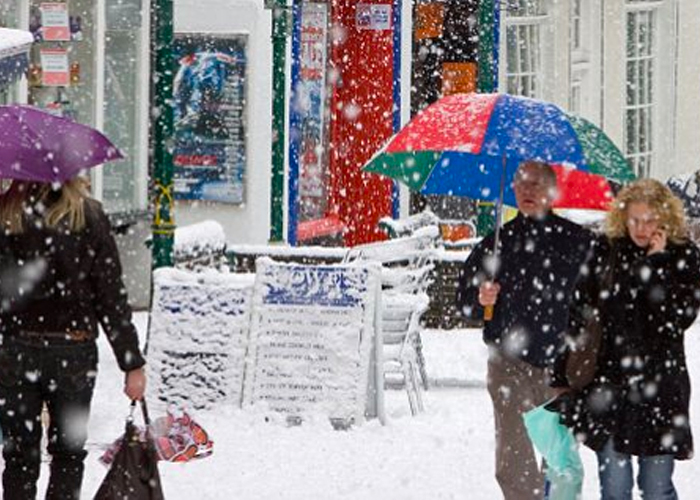AS A business owner, the whole week can be flipped upside down checking the weather forecast to see if the local area has a dreaded amber or red weather warning approaching.
David Woodfield, Insurance Director at Business comparison site Bionic, has put together a checklist to prepare for the uncertain British winter. Whether it’s upcoming storms, floods, high winds, snow, or ice, here’s how small business owners can protect themselves over the next few months.
How to protect your business from storm damage
Fixing the damage caused by storm damage can cost a lot of time and money. The best way to protect your business from storm damage is to make sure everything on the building is as secure as it can be, so look out for the following:
- Make sure all roof tiles are secure and any broken or loose ones are replaced.
- Make sure all gutters are properly attached and any blockages are cleared.
- Keep all external doors, windows and gates securely closed.
- Secure all fences and fence posts and remove or secure all outdoor furniture/displays.
If high winds have been predicted in your area, then you should:
- Make sure staff vehicles or company cars or vans are parked away from any trees and are in a safe area.
- Make sure any company signs, outdoor seats, and basically anything that’s not fixed to the floor, are taken inside so they can’t be picked up by the winds and cause any damage.
What to do if snow and ice are forecast…
The UK is always hit with a cold snap, so it’s important to know what you can do to prepare and protect your business when things freeze over. It has been estimated by business groups that the disruption caused by heavy snowfall will cost businesses £1 billion.
Here are some steps to help make sure your premises are protected against snow and ice:
- Make sure all internal and external pipes are insulated, especially in unheated areas like the attic or basement. You can insulate them with foam or rubber tubes, remember to check them regularly to avoid erosion damage.
- Clear any outside paths of obstacles and put all outside seating and plant pots away.
- Take note of where your internal stop tap is so you can turn off the water supply to the premises in an emergency.
- Make sure that any outside drains are unblocked as ice and snow will make the issue worse.
How to protect your business from flooding
It might sound obvious, but the best way to protect from flooding is to make sure you have a robust business flood plan in place, for both the short and long term. In the short term, check the Environment Agency website and see if there are flood warnings in your area. It’s also worth taking a look at the live flood warning map – you should immediately start planning for the worst if you spy a warning near you.
If you’ve ever been the victim of flooding, then the odds are you’ll fall foul of floodwaters again at some point. So, it makes sense to put long-term plans in place to protect your business against future flooding.
- Replace any downstairs carpets with sealed wood or ceramic tiles.
- Fit any water entry points, including doors and airbricks, with flood skirts and use water-resistant sealant on doors, windows, and skirting boards.
- Raise electrical sockets as high up the wall as possible.
- Plaster walls with waterproof lime plaster and get a chemical damp-proof course.
- Regularly check drains to make sure they’re clear from any blockages, which can exacerbate rising water levels, and fit one-way valves to pipes and water outlets so no water can flow back up them.
For more details, and more information about how to protect your business with flood insurance, you can check out the full report here.








